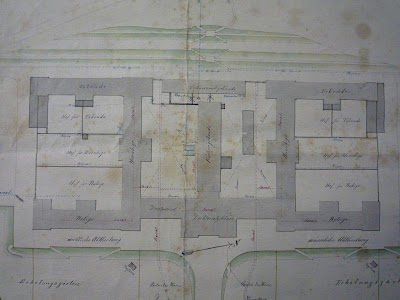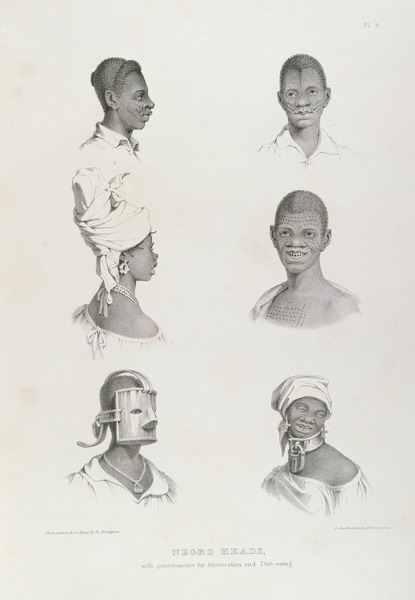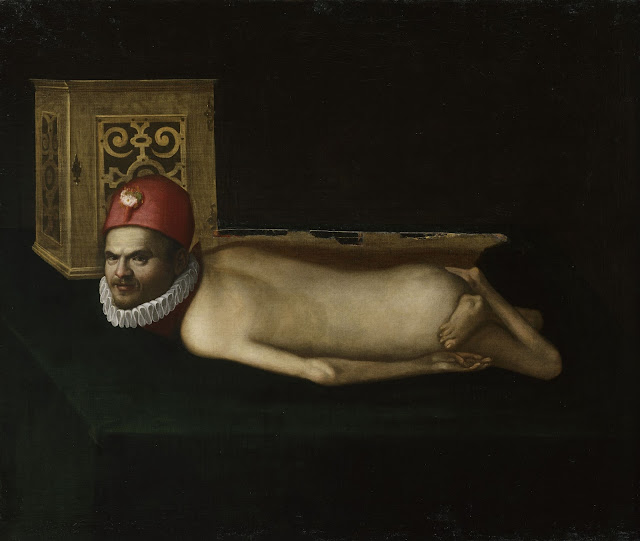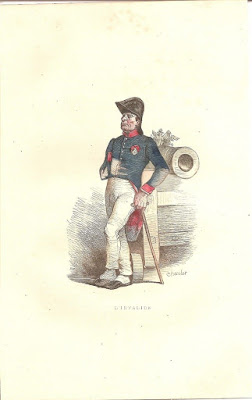A History of Psychiatry in Objects
by Bettina Alavi and Ralph Höger
Using the agency of objects as an approach in university-based teacher training seminar
During the winter semester of 2017/18, students on the teacher training course at Heidelberg University of Education and students at the University of Heidelberg took part in the seminar “A History of Psychiatry in Objects”. This seminar was designed and taught by the history educationalist Bettina Alavi and Ralph Höger, a doctoral candidate at the Heidelberg School of Education. The seminar adopted Disability History (Waldschmidt/Bösl 2017; Bösl 2010) as its approach, focusing in particular on the question of the “agency” of material culture (that is, the agency of things and objects). The seminar enquired to which extent objects both contribute to and constitute 20th- and 21st-century understandings of psychiatry: how are the boundaries drawn between healthy/unhealthy, normal/not normal, socially acceptable/inacceptable? Our underlying assumption was that social ideas and orders are inscribed into psychiatric objects and that the psychiatric objects themselves in turn influence the emergence of social orders. Students’ task was to summarise the findings arising from this specific perspective of psychiatric objects in the form of articles for this specialist blog. The seminar thus gave teacher training students the opportunity to take part in a form of Public History. At the same time, the seminar itself constituted a form of Public History, promoting the themes and concerns of Disability History to educators able to disseminate them more widely across society.
Seminar participants traced the agency of objects in the following historic psychiatric items: restraint belts, injection needles, keys, regulations for nursing staff, a medical file, and a carpet made by patients. The objects all came from the Pfalzklinikum Klingenmünster, a psychiatric and neurological clinic in a remote part of the southern Palatinate near Landau. The clinic served as a local example, providing participants with both a concrete context and previously unstudied objects.
The nurses’ keys tell us about power relations, regulating how people were locked in and out of the institution. At the same time, the keys highlight the fluidity of the boundary between “inside” and “outside” the institution. The keys made both temporary openings and unplanned, forced imprisonments possible. The power of the keys thus invested care staff with significant authority. Accordingly, staff needed to be very careful with these power-bestowing objects.
A woman’s medical file from the National Socialist period reveals performative agency. The acts of writing performed in these records led to momentous decisions in a later court case. The diagnosis set down in the medical file became the main grounds for the woman’s forced sterilisation.
Injection needles were ambivalent objects. They were vehicles of therapeutic care on the one hand and medical force on the other. As objects associated both with the hope for a cure as well as with sedation and control, injection needles defined the boundaries in doctor-patient relations.
The restraint belts represent compulsory measures that restricted the patients in their free movement. With the restraint, power is directly transferred to the nursing staff which executes the compulsory measures. Even just the look of the belts might have triggered patients' anxieties.
Nurses’ uniforms are a “social skin”, delineating the boundaries between doctors and nurses, nurses and patients, and doctors and patients. At the same time, these boundaries are subject to negotiation, which can be seen from the fact that in many places, female nurses no longer wear a cap; in some institutions, uniforms have disappeared altogether.
Bettina Alavi is professor for history didactics at the Heidelberg University of Education. Ralph Höger is a doctoral candidate the Heidelberg School of Education.
Using the agency of objects as an approach in university-based teacher training seminar
During the winter semester of 2017/18, students on the teacher training course at Heidelberg University of Education and students at the University of Heidelberg took part in the seminar “A History of Psychiatry in Objects”. This seminar was designed and taught by the history educationalist Bettina Alavi and Ralph Höger, a doctoral candidate at the Heidelberg School of Education. The seminar adopted Disability History (Waldschmidt/Bösl 2017; Bösl 2010) as its approach, focusing in particular on the question of the “agency” of material culture (that is, the agency of things and objects). The seminar enquired to which extent objects both contribute to and constitute 20th- and 21st-century understandings of psychiatry: how are the boundaries drawn between healthy/unhealthy, normal/not normal, socially acceptable/inacceptable? Our underlying assumption was that social ideas and orders are inscribed into psychiatric objects and that the psychiatric objects themselves in turn influence the emergence of social orders. Students’ task was to summarise the findings arising from this specific perspective of psychiatric objects in the form of articles for this specialist blog. The seminar thus gave teacher training students the opportunity to take part in a form of Public History. At the same time, the seminar itself constituted a form of Public History, promoting the themes and concerns of Disability History to educators able to disseminate them more widely across society.
 |
| Schmidt, Heinrich, Die Pfälzische Kreis-Heil- u. Pflegeanstalt Klingenmünster, Landau 1926, p.2. |
Seminar participants traced the agency of objects in the following historic psychiatric items: restraint belts, injection needles, keys, regulations for nursing staff, a medical file, and a carpet made by patients. The objects all came from the Pfalzklinikum Klingenmünster, a psychiatric and neurological clinic in a remote part of the southern Palatinate near Landau. The clinic served as a local example, providing participants with both a concrete context and previously unstudied objects.
We would like to take this opportunity to thank the Pfalzklinikum staff
Andreas Dietz and Christel Flory. Christel Flory worked
at the clinic for many years as a laboratory technician and collected
the objects we investigated herself.
State of research
Psychiatric history is already an established field of research within social history and forms the subject of several relevant publications. Brink’s Grenzen der Anstalt (2010) was helpful in the context of our seminar, as the concept of boundaries – both between the outside world and the institution and within the institution, between open and closed wards and gardens and buildings, for example – proved particularly stimulating for our object-focused approach.
Beyer’s Ph.D. thesis (2009), which looked specifically at the Pfalzklinikum Klingenmünster, contained a lot of detailed information on the clinic, which helped to place the objects in context. Previous studies on the agency of objects in the history of psychiatry include Majerus (2017), who looked at pills, walls and room layouts, and Ankele (2017), who investigated hospital beds.
 | |
| Excerpt from the construction plan 1867 ©Pfalzklinikum Klingenmünster |
Beyer’s Ph.D. thesis (2009), which looked specifically at the Pfalzklinikum Klingenmünster, contained a lot of detailed information on the clinic, which helped to place the objects in context. Previous studies on the agency of objects in the history of psychiatry include Majerus (2017), who looked at pills, walls and room layouts, and Ankele (2017), who investigated hospital beds.
The students’ blog articles
In their sheer materiality, the regulations of 1903 formed the foundations of employment relations between nurses and the clinic, regulating nurses’ entire period of service. The regulations set out the training nurses were to receive and detailed the scope of their duties. They reveal a certain margin for interpretation and highlight their own normativity, for example by setting out the sanctions applied for specific conduct.
The nurses’ keys tell us about power relations, regulating how people were locked in and out of the institution. At the same time, the keys highlight the fluidity of the boundary between “inside” and “outside” the institution. The keys made both temporary openings and unplanned, forced imprisonments possible. The power of the keys thus invested care staff with significant authority. Accordingly, staff needed to be very careful with these power-bestowing objects.
A woman’s medical file from the National Socialist period reveals performative agency. The acts of writing performed in these records led to momentous decisions in a later court case. The diagnosis set down in the medical file became the main grounds for the woman’s forced sterilisation.
Injection needles were ambivalent objects. They were vehicles of therapeutic care on the one hand and medical force on the other. As objects associated both with the hope for a cure as well as with sedation and control, injection needles defined the boundaries in doctor-patient relations.
The restraint belts represent compulsory measures that restricted the patients in their free movement. With the restraint, power is directly transferred to the nursing staff which executes the compulsory measures. Even just the look of the belts might have triggered patients' anxieties.
Nurses’ uniforms are a “social skin”, delineating the boundaries between doctors and nurses, nurses and patients, and doctors and patients. At the same time, these boundaries are subject to negotiation, which can be seen from the fact that in many places, female nurses no longer wear a cap; in some institutions, uniforms have disappeared altogether.
The construction plans reflect the major shifts in child and adolescent psychiatry in the late 1960s and early 1970s. Modern facades sought to express the field’s successful “clinification”. However, it remains doubtful whether this was enough to truly draw a line under its inglorious previous history.
The carpet woven by patients in the 1970s exemplifies the tension between the economic activity required for the clinic’s upkeep and the therapeutic measures structuring inmates’ daily routines, such as art therapy. Thus it reveals the somewhat contradictory aspects of occupational therapy, oscillating between the aspiration for meaningful, useful work and the desire for artistic self-realisation.
Students’ blog contributions were edited to various degrees.
Bettina Alavi is professor for history didactics at the Heidelberg University of Education. Ralph Höger is a doctoral candidate the Heidelberg School of Education.
__________________________
References
Ankele, Monika (2017): Wie das Krankenbett zum Medikament wurde.
http://science.orf.at/stories/2847043/ (last accessed 2 May 2018)
Beyer, Christof (2009): Von der “Kreis-Irrenanstalt” zum Pfalzklinikum. Eine Geschichte der
Psychiatrie in Klingenmünster. Neustadt: Institut für Pfälzische Geschichte und Volkskunde.
Bösl, Elsbeth (2010): Was ist Disability History? Zur Geschichte und Historiographie von
Behinderung. In: Elsbeth Bösl, Anne Klein, Anne Waldschmidt (eds.): Disability History.
Konstruktion von Behinderung in der Geschichte. Eine Einführung. Bielefeld: Transcript, pp.
29-43.
Brink, Cornelia (2010): Grenzen der Anstalt. Psychiatrie und Gesellschaft in Deutschland ;
1860 - 1980. Göttingen: Wallstein Verl. (Moderne Zeit, 20). Available online at
http://www.h-net.org/reviews/showrev.php?id=46189.
Majerus, Benoît (2017): Material Objects in Twentieth Century History of Psychiatry. In:
BMGN - Low Countries Historical Review 132 (1). DOI: 10.18352/bmgn-lchr.10314.
Waldschmidt, Anne/Bösl, Elsbeth (2017): Nacheinander/miteinander. Disability Studies und
Dis/ability History. In: Nolte, Cordula/Frohne,Bianca/Halle,Uta/Kerth, Sonja (eds.) (2017):
Dis/ability History der Vormoderne. Ein Handbuch. Affalterbach: Didymos, 40-49.
Recommended citation:
References
Ankele, Monika (2017): Wie das Krankenbett zum Medikament wurde.
http://science.orf.at/stories/2847043/ (last accessed 2 May 2018)
Beyer, Christof (2009): Von der “Kreis-Irrenanstalt” zum Pfalzklinikum. Eine Geschichte der
Psychiatrie in Klingenmünster. Neustadt: Institut für Pfälzische Geschichte und Volkskunde.
Bösl, Elsbeth (2010): Was ist Disability History? Zur Geschichte und Historiographie von
Behinderung. In: Elsbeth Bösl, Anne Klein, Anne Waldschmidt (eds.): Disability History.
Konstruktion von Behinderung in der Geschichte. Eine Einführung. Bielefeld: Transcript, pp.
29-43.
Brink, Cornelia (2010): Grenzen der Anstalt. Psychiatrie und Gesellschaft in Deutschland ;
1860 - 1980. Göttingen: Wallstein Verl. (Moderne Zeit, 20). Available online at
http://www.h-net.org/reviews/showrev.php?id=46189.
Majerus, Benoît (2017): Material Objects in Twentieth Century History of Psychiatry. In:
BMGN - Low Countries Historical Review 132 (1). DOI: 10.18352/bmgn-lchr.10314.
Waldschmidt, Anne/Bösl, Elsbeth (2017): Nacheinander/miteinander. Disability Studies und
Dis/ability History. In: Nolte, Cordula/Frohne,Bianca/Halle,Uta/Kerth, Sonja (eds.) (2017):
Dis/ability History der Vormoderne. Ein Handbuch. Affalterbach: Didymos, 40-49.
Recommended citation:
Bettina Alavi / Ralph Höger (2019): A History of Psychiatry in Objects. In: Public Disability History 4 (2019) 1.


